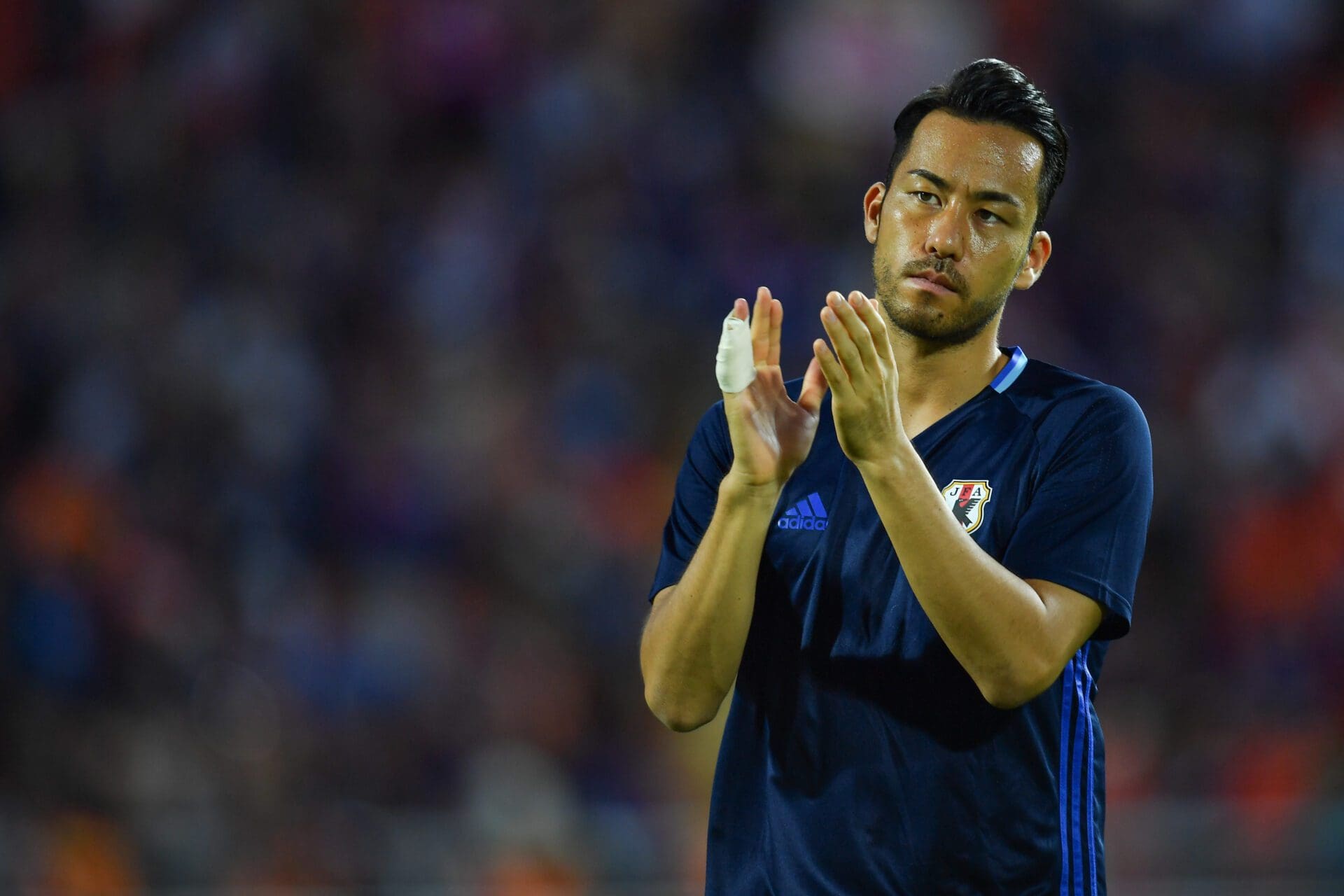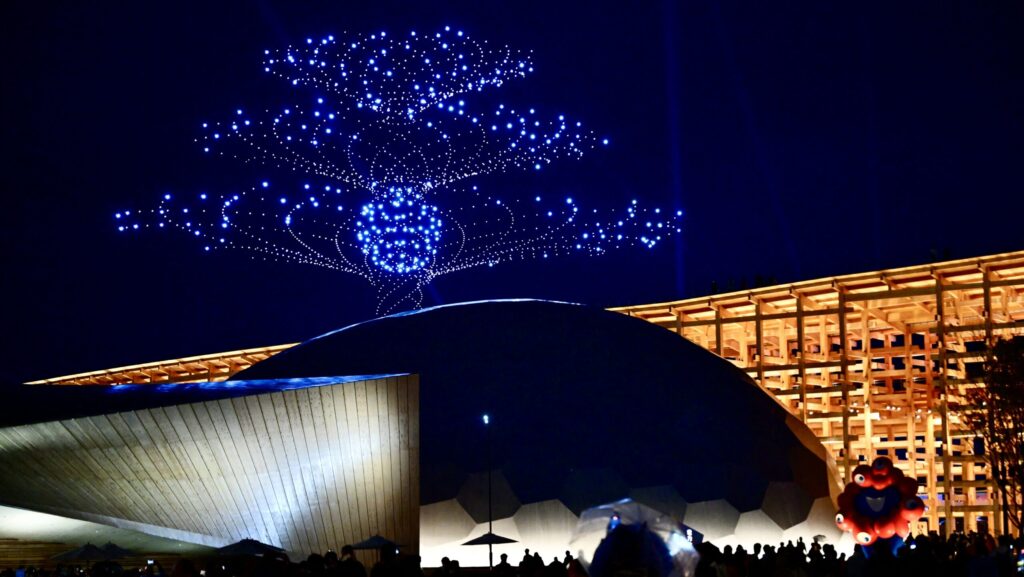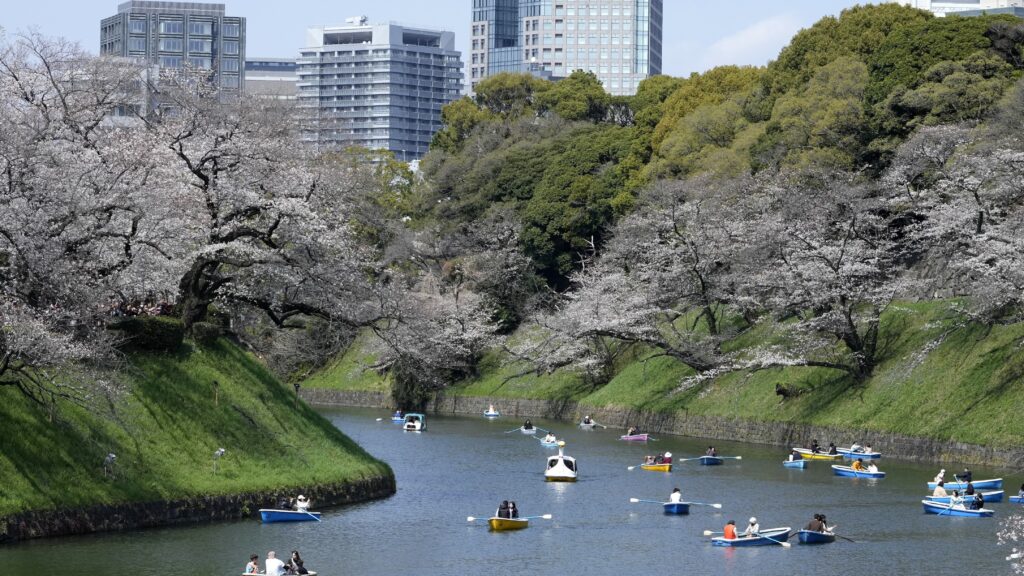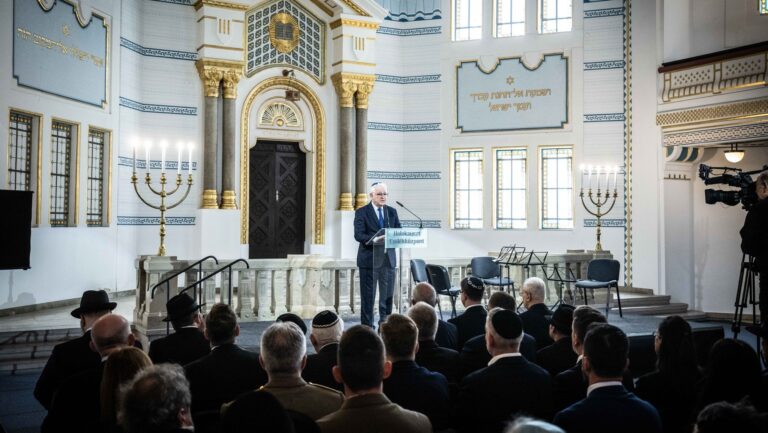Asian teams have made their stand as world football returns to the largest continent. They stood out thanks to their performance on the pitch and their patriotism, as opposed to some European teams who attracted attention with cheap woke stunts.
The football World Cup finally returned to Asia, twenty years after the largest continent first hosted one of the world’s most watched sporting events. The Qatar World Cup saw the biggest representation from Asia ever, five teams out of the 32. (Technically, there were six teams from Asia, because Australia joined the Asian Football Confederation in 2006 and qualified from there.)
While football still remains mostly the game of Europe and Latin America, the Asian teams, with the sole exception of the host nation Qatar, held their ground, delivering some of the biggest upsets and surprise results of the tournament. Although the breakthrough didn’t come this time either, the solid performance by Japan, Korea or Saudi Arabia and the accompanying euphoria of their fans at home may energize and further raise the profile of the game in these countries, just as the first ever Asian world cup co-hosted by Japan and Korea had a tremendous impact on the game’s development in the region.
Saudi Arabia beat the later world champion Argentina overcoming a one-goal deficit at their opening game. The historic win brought festivities onto the streets of major cities in the kingdom and a national holiday was declared for the following day to allow people to celebrate. Iran defeated Wales; the ‘football-Asian’ Australian team beat Denmark to qualify for the second round. The Korean team, nicknamed as the Tigers of Asia, beat Cristiano Ronaldo’s Portugal, knocked out two-time world champion Uruguay, and only got stopped by Brazil in the knock-off stage.
Japan not only survived the so-called ‘Group of Death’, but delivered two of the biggest upsets of the tournament
by beating Germany and Spain, both former world champions. The Blue Samurai held on against the later bronze medallist Croatian team until the last minute and only lost in a penalty shootout. The returning squad and their coach were celebrated as heroes at the airport upon arrival. The team coach, Moriyasu Hajime just got his contract renewed and was tasked to lead the Samurai Blue towards the 2026 World Cup.
The performance by the Korean and the Japanese teams was sharp contrast with that of Germany. The once awe-inspiring multiple world champion Nationalelf was eliminated at the group stage, again. Their poor performance on the pitch was coupled with their main act before their first game, a choreographed political demonstration against the lack of freedom of speech in host Qatar, and the tantrum thrown by goalkeeper Manuel Neuer for not being allowed to wear his rainbow armband. The team photo of the German players covering their mouths was probably the most ridiculous and pathetic moment of the whole tournament. Not a sign of concentration on the game, the very reason they were there. While the Germans tried to lecture the Qataris and the whole world with a morally superior attitude, in the end it was them who were taught a lesson in football.
The English team does not deserve much more sympathy for their empty gestures either:
kneeling for the controversial BLM movement and the frenzy about the so-called ‘One Love’ armband. Which they ended up not wearing in the end; instead, team captain Harry Kane flashed a £535,000 rainbow Rolex, probably his way of making a statement about inclusivity and equality. Kane and coach Gareth Southgate, often nicknamed as ‘Wokegate’ by fans, were probably not aware of the fact that the last time England hosted and won a World Cup, homosexuality was still illegal in the United Kingdom…
It is an interesting repeat of history that politically conscious Germany was eliminated by Japan this time, while four years ago the dagger was in Korea’s hands, or more precisely in the leg of Son Heung-min, the best and most famous player of the ‘Taegeuk Warriors’.
It is important to mention that Europe, more precisely European football culture and Germany in particular, played a key role in the development and the successes of both the Japanese and the Korean team.
West Germany did not only provide expertise but also a source of inspiration for Japanese football.
Germany, just like Japan, was a losing power in World War II, and the West German team’s triumph at the 1954 World Cup (still a painful memory for us, Hungarians, as they beat the Magic Magyars in the final) was a signal that there was a way to re-join the civilized world and restore national pride in a peaceful way. It was a coach from West Germany, Dettmar Cramer, who led the Japanese team to the top eight at the first Tokyo Olympics in 1964, and to the bronze medal four years later in Mexico. The first Japanese player to play in a professional league, Okudera Yasuhiko, went to play in the German Bundesliga in 1977.
Team Japan had to walk a long road before they became capable of beating anyone, including the top teams, and turned Doha from the nightmare of 1993 to a fond memory. In 1993, Japan, with the present coach, Moriyasu Hajime at the helm, missed the chance to qualify for their first World Cup in the very last minute against Iraq at the playoff qualifier. The tragedy of Doha haunted Japan for decades. Back then the whole squad consisted of players selected from J.League players with no international experience. Fast forward to Qatar 2022 and this time out of the 26 players representing the Land of the Rising Sun, 19 were selected from different European clubs, eight of them, including the two goal scorers against Germany, play in the German Bundesliga. Because of the growing number of Japanese players there, the Japan Football Association opened a European office in Germany two years ago in order to be able to directly engage with Bundesliga teams who may be reluctant to let go off their valuable players to the national team in fear of injuries and conflict of schedules. The trend is visible: before, a solid performance in the national team attracted the attention of European clubs and agents and got the players their ticket to Europe; now it’s more often players who have already proved themselves in top leagues being called to join the national team. Japanese players have become more and more attractive targets for professional European clubs for their diligence, strong work ethic and fable price tags.
The Blue Samurais spent their efforts on their game, sang their national anthem, showed healthy patriotism, and left politics out of their football.
There are multiple reasons behind this. One is historical: after the devastating Pacific War and the suffering caused by the Imperial Japanese army to nations all over Asia, lecturing other countries on how to do things is just something Japan does not do. Another reason is that it would be strange for Japan to lecture Qatar as it is the third biggest exporter of natural gas to Japan, a country with zero domestic resources of oil and gas.
Many may wonder why the Japanese national football team is called the Samurai Blue. The samurai part is obvious, but why blue? The national colours, given the fact that the flag symbolizes the rising sun, are red and white. In many team sports, the respective Japanese national teams therefore adopted red jerseys. By contrast, the football team has long played in blue shirts, but no one really knows the origin of this tradition for certain. The Japan Football Association (JFA) was established in the late Meiji era, in 1921. (Interesting fact that the official English name includes the word ‘football’, as the game is widely called worldwide, but in the Japanese language the world for the game is サッカー, which is literally ‘soccer’.) In the early days various Japanese teams, mostly squads based on university teams played abroad, and any given Japanese eleven playing abroad was team Japan representing their country.
It was only in 1930 when the first proper national team was formed by a JFA selected from players playing at home.
The uniform of the first national team was light blue. According to one theory, it was the colour of the team of the most prestigious university, the Tokyo Imperial University, predecessor of the University of Tokyo, which gave the most players to the national team in the early days, and the players probably took their own jerseys with them as well. Another theory says the blue symbolizes the country consisting of islands surrounded by sea from every direction. Unfortunately, there are no records to corroborate either of these theories, so we can only say with certainty that team Japan started playing in a blue jersey and stayed that way. Except for a short period between 1988 and 1991, when the team changed to red, representing the national colour and joining an international trend. It was a very unsuccessful era for team Japan, and after having failed to qualify for the 1990 World Cup, the Japanese, who are traditionally prone to superstitions, changed back to blue. And
considering the spectacular performance of the team in Qatar, the blue colour will surely stay.
An interesting fact: the women’s national team also plays wearing the exactly same dark blue jerseys, but their nickname is ‘nadeshiko’, which means pink (probably not PC anymore in the ‘progressive’ world…), and also refers to the Dianthus flower.
It is not a bad choice for Japan to wear blue, as neighbouring rival Korea wears red. The yin and yang symbol in the middle of the Korean flag is red and blue; team Korea, after the establishment of the Republic of Korea, wore red as the home jersey and blue for the away games. With time, the red colour became permanent, and white replaced blue as the alternate colour—for a reason unknown to me. The team is also often referred to as ‘the Reds’, and their fans as the ‘Red Devils’.
The performance of the Tigers of Asia was also not accompanied by empty political gestures. One of the most memorable moments outside the game was when team captain Son Heung-min, the most revered and emblematic player of the red team, broke into tears and humbly admitted he hadn’t played his best, but the team effort brought success for Korea. To Son’s defence, he played with a fractured facial bone, that is why he is still wearing a facial mask during matches. His post-game Instagram post after the dramatic win against Portugal with the picture of the celebrating team got over five million likes and his words “we didn’t give up and you didn’t give up on us” became an instant classic in Korea.
There is no better symbol of Korean football than Son, who is an object of national pride in Korea, and rightly so.
This may be a controversial opinion, and is strictly personal, but Son Heung-min is probably the best football player in the world, and his greatness can only be compared to that of the legendary Johan Cruyff, but his big handicap is that he is Korean, and his name is difficult to remember, and is less catchy and marketable than for example that of Ronaldo. Son, or Sonny as he is often referred to, embodies all the virtues of a truly great sportsman. He was an extraordinary talent as a child, and relocated to Germany at the age of sixteen, making his debit in the German Bundesliga two years later. Son demonstrated strong work ethics and humbleness already at a young age. In order quickly adapt to the pace and to his new environment, he learnt to speak the language before moving to Germany. Son, who has played for Premier League side Tottenham Hotspurs since 2015, has turned almost the whole country into Tottenham supporters, and having Sonny on the team made the club change its marketing strategy, too. The club’s official homepage is bilingual, Korean being the other language besides English, and it is all about Son.
Son is a versatile, all-round attacking player, is two-footed and can effectively and dangerously play in every position, be it striker, second striker or winger. Unlike many spoilt superstars of the day who expect their managers to build the team around them, have everyone else fall in line and serve their ego, Son is the opposite. He declared in one interview that he never cared in what position he plays, the important thing for him is to be in the game, adding that he was ready to do whatever his coach says. Son always draws praise from teammates for his great work ethic and his contribution to defence despite being a natural-born attacking player.
Son showed humbleness and patriotism when he suspended his football career in the Premier League to complete his compulsory military service, despite the fact that based on his sporting achievement, he could have been exempted from it.
He demonstrated not only his love for his country, but his industriousness, too,
when he finished as one of the top five among the trainees completing basic military training. It would be hard to find something similar in a European team.
Son is super rich of course, and famous for owning fancy houses and for his collection of expensive watches and supercars. But he also gives back to his own country. For example, he donated significant amounts to helping the 2019 Goseong Fire victims and to Koreas’s Covid-19 efforts. He doesn’t only spend money, but invests it: he launched his own fashion brand called NOS7, the number 7 coming from his jersey number, while NOS being his own name written in reverse, and also stands for “Nothing, ordinary, Sunday”. It is not hard to discover the similarity between NOS7 and CR7, Cristiano Ronaldo’s fashion brand. Son is 30 years old now, and based on his form and personality, we can hope to see him play at the 2026 World Cup, too.
Despite their outstanding performance, Asian teams didn’t manage to break the glass ceiling of world football. Japan has not made it to the best eight, and despite their relative success, they were left with a bad taste in their mouth: they had the chance against later bronze medallist Croatia by taking the lead, and only losing the penalty shootout. Yoshida Maya, captain of the Samurai Blue said
he had enough of always being a ‘good loser’ that attracts the sympathy of others, and would rather have his team be the winner.
There is still something missing for Japan to make a breakthrough and take a place alongside European or Latin American football powerhouses. Korea couldn’t repeat the magic of the Hiddink era either, when they played a semi-final in 2002. Nevertheless, Korea reaching the second round for the third straight World Cups must be considered as a huge success in itself. In addition, being able to beat any top team is definitely a step forward, and the trophy list of the Asian teams (Argentina, Germany, Spain, Portugal) is impressive.
At the next World Cup in 2026 jointly hosted by Canada, the USA and Mexico, there will be more, at least eight, representatives of the Asian continent with the new 48-team format. Some of them will be happy to even make it, probably for the first time, to the most prestigious international football tournament. But what is certain is that the East Asian football powers will not be satisfied with just that. The 2022 World Cup having produced the first African medallist may make Japan and Korea even hungrier for success.








